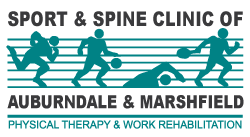
What is hip pain?
Hip pain refers to discomfort or pain felt in or around the hip joint, which is the largest joint in the body. The hip joint connects the thigh bone, or femur, to the pelvis and allows for a wide range of motion; such as walking, running, and jumping. Hip pain can be caused by a variety of factors, ranging from injuries and overuse to medical conditions such as arthritis or hip dysplasia. Here are some common causes and potential solutions for hip pain:

- Arthritis: Arthritis is a common cause of hip pain, particularly osteoarthritis. Treatment options may include anti-inflammatory medications, physical therapy, and possibly joint replacement surgery.
- Hip fractures: A hip fracture can cause significant pain and immobility. Treatment will depend on the severity of the fracture but may include surgery, physical therapy, and pain management.
- Bursitis: Bursitis is an inflammation of the bursae (small fluid-filled sacs) that cushion the joints. Treatment options may include rest, ice, physical therapy, and anti-inflammatory medication.
- Tendinitis: Tendinitis is inflammation of the tendons that attach to the hip joint. Treatment may include rest, ice, physical therapy, and anti-inflammatory medication.
- Muscle strain or overuse: Muscle strains or overuse can cause hip pain. Treatment may include rest, ice, physical therapy, and pain management.
- Sciatica: Sciatica is a condition in which the sciatic nerve, which runs from the lower back down the legs, becomes compressed or irritated. Treatment may include pain management, physical therapy, and surgery in severe cases.
- Hip Dysplasia: Hip dysplasia is a congenital condition in which the hip joint is abnormally shaped. Treatment may include physical therapy, pain management, and surgery in severe cases.
Some common symptoms of hip pain include:
- Pain in the hip joint or surrounding areas, such as the groin, thigh, or buttocks
- Stiffness or limited range of motion in the hip joint
- Clicking or popping sounds when moving the hip joint
- Weakness in the hip muscles
- Swelling or tenderness in the hip area
- Difficulty standing up, walking, or climbing stairs
If you are experiencing hip pain, it’s important to see a healthcare provider for a proper diagnosis and treatment plan. Your provider may perform a physical exam, order imaging tests such as X-rays or an MRI, and recommend treatments such as physical therapy, medications, or surgery, depending on the underlying cause of the pain.
In the meantime, you may find some relief from hip pain by:
- Resting and avoiding activities that aggravate the pain.

- Applying ice or heat to the affected area.
- Taking over-the-counter pain relievers, such as ibuprofen or acetaminophen.
- Doing exercises or stretches recommended by a physical therapist to help strengthen the hip muscles and improve flexibility.
- Losing weight if overweight or obese.
- Using assistive devices, such as a cane or crutches, to help take pressure off the hip joint.
- Undergoing surgery or other medical interventions, depending on the underlying cause of the pain.
It’s important to note that the appropriate treatment for hip pain will depend on the underlying cause, so it’s always best to consult a healthcare provider for a proper diagnosis and treatment plan. The team at Sport & Spine are here to help you assess and treat your hip pain. Give us a call today to schedule your appointment.
